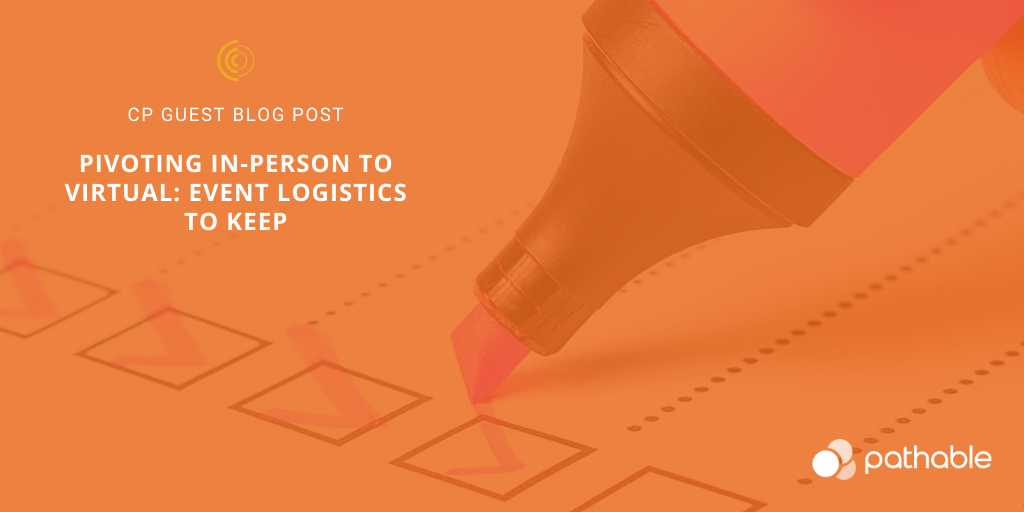
by Julie Ratcliffe | Jun 25, 2020 | Blog
This is a guest post written by Jordan Schwartz, president, and co-founder of Pathable, an event app and website platform for conferences and tradeshows. He left academic psychology for the lure of software building and spent 10 years at Microsoft leading the development of consumer-facing software. Frustrated with the conferences he attended there, he left Microsoft in 2007 with the goal of delivering more value and better networking opportunities through a next-generation conference app. Jordan moonlights as a digital nomad, returning often to his hometown of Seattle to tend his beehives.
A lot goes into event planning and management. From the conception of the event’s big idea to everything leading up to the day of the event (and even after), different event logistics are deployed to make the event a success.
When you have put all the required logistics in place but then a disaster like the COVID-19 pandemic strikes, you can either choose to cancel your event or look for an alternative. Thankfully, many event organizers are finding pivoting to virtual events as the best option to save costs and retain their audience.
When you have decided to pivot, you have to go back to the drawing board to restrategize and decide which of your event logistics will be relevant to your virtual event production. The following are some ideas of what can stay or can be adjusted in order to have a seamless pivot:
Continue reading to learn more.
Event Technology Requirements
Technology is required to produce any kind of event and your technology requirement depends on your event type and budget. Some solutions often deployed for events include:
- Event planning software
- Registration automation
- Facial recognition and check-in apps
- RFID badges for audience verification
- Credential Management and Payment Integration
- 3D Projection and displays with spatial augmented reality
- WIFI-Speakers
- Live streaming and On-demand event video platforms
- Chatbots
- Live translation
- Lead retrieval, etc.
Whatever technology plans you have made for your event will require an overhaul when pivoting. While you might still retain some of the solutions mentioned above if you had them in your plans already, an all-in-one software is most appropriate for pivoting.
Event Stage Reservation and Production Management
You will need an event stage if you do not plan that your speakers will live stream from their own base. This might be an actual stage in an event hall or a studio from where you can produce and live-stream your event.
This will also include other things you need for your stage set up such as decor, background (if not using a virtual background), seats for speakers, a podium (if necessary), screen, sound production, and any other requirements that suit your event plan.
If you have chosen to use a live stage, you will also need the services of your onsite production crew. The team will include people managing the stage, audio-visuals, and other support required to produce and live stream high-quality content.
Registration and Credential Management
You will have to retain some of your registration logistics such as your online registration platform. However, some other aspects of credential management strategy such as on-site check-in, etc will have to change. Your registration data should be integrated with or migrated to the virtual event platform to facilitate easy attendee login and use of attendee data that will be required on the platform. These features can be used to create community and facilitate networking.
Event Content Collection/Retrieval and Management
Whatever means or platform being used to collect, retrieve, and manage your event content such as PowerPoint presentations, keynotes, videos, ads, and other prepared content can be retained. This content should be readily available to feed into your virtual event platform anytime.
You can talk to both your content management platform provider and virtual event platform provider to work out modalities for data integration or migration.
Event Activities Scheduling
Your event activities schedule can be retained with some adjustments. Keynotes, panel discussions, and breakout sessions can remain as planned, but you will have to be mindful of timing. The activities should not be longer than an hour because of the short attention span of online audiences.
The tea breaks and meal breaks can be retained. While there may not be actual dining, people can use the time to do whatever they like or even have a meal at their own location.
The networking and happy hours can also take place on the virtual event platform. Attendees can participate in the activities using your mobile event app.
Some parts of your event promotion and marketing plan will remain while some will have to change. You can retain your event website and sustain the momentum of your publicity on social media. However, additional promotional content should be created to portray the new virtual experience, so that prospective attendees can begin to anticipate the event.
In addition, rather than you or your partners producing branded items, the attention should be shifted to producing branded hashtags, images, and short promotional videos that can be publicized on social media.
Your initial plan to give sponsors and exhibitors maximum brand exposure during your live event should be implemented for virtual. Your team should provide guides to sponsors and exhibitors on size and resolutions for branded images and videos. Your team should also work with the virtual platform provider to determine how and where to strategically place the promotional content from sponsors and exhibitors.
You can also create time slots on the platform for attendees and sponsors to manually book appointments with one another. This can be done when all attendee data has already been collected and integrated with the virtual event platform. You can set aside some time before the event when attendees and sponsors are allowed to log on to the platform to book such appointments.
There can also be a virtual exhibit hall where partners display video showcases and other promotional items that attendees can view.
Event Customer Service
For in-person events, situations arise where attendees require assistance and there are standby customer service desk points to attend to such. This aspect should be properly preserved for virtual events as well. Attendees will certainly need assistance for a variety of issues that may come up while using your event platform.
You can provide virtually manned customer service points on your platform or have chatbots to handle and resolve complaints. Your arrangement can also include dial-in numbers in case some attendees are unable to access the platform or are having issues navigating the mobile app.
In order to reduce complaints, you can take all your platform users through a tour of the platform by producing a video guide and sending it to them ahead of the event. You can follow this up with an imagery poll to test their familiarity with the platform.
Event Communication Channel
Establish your communication line of command and assign roles. Your event team should have a separate communication platform apart from the main event platform for planning, implementation, and resolving technical issues.
You can use an event planning and tracking tool so that your team can monitor in real-time how the transition progresses before the event. On the day(s) of the event, there should also be a line of command to designate the troubleshooting and fixing of issues that might come up.
Travel / Accommodation / Entertainment for Event Production Crew
This might seem unnecessary considering that the event is now virtual. However, when you need a site to produce or live stream the event and you require some or all of your speakers and team to be on-site, they have to be catered for throughout the number of days their services would be needed.
So while you are not looking at having a large crowd, do have travel, accommodation, and entertainment plans for your team and your guests.
Contingency Plans
You should have contingency plans in case of disappointments that may come up during your event production. A common experience is poor network connection or outright network failure. Another one is absence; a speaker might inform you that they are not coming for reasons beyond their control (you can never predict what can happen during a health crisis).
A contingency plan might be to ask the speakers of all major sessions to pre-record and send their presentations even if you plan to bring them on live. Such content can be streamed when speakers don’t show up or if there is a network failure at their end.
To reduce incidences of bugs on the virtual event platform, make sure you do multiple test runs to ensure that everything is working as it should. You can use event volunteers to test out your platform and report any issues.
Post-Event Logistics
This includes everything that has to do with lead retrieval, post-event surveys, and others. Your virtual event platform should have features for easy retrieval of data and actionable insights from your event.
You can also use the event’s mobile app to send post-event surveys to attendees, sponsors, exhibitors, and partners to know their experience and measure the impact of your event.
For more virtual events tips and tricks, read CommPartners’ blog. For more information about Pathable, visit their website.
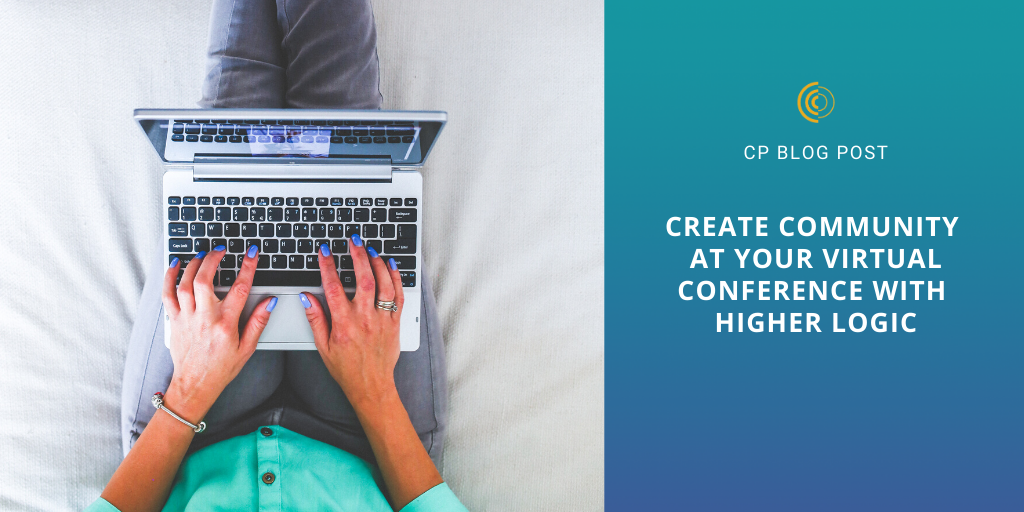
by Julie Ratcliffe | May 27, 2020 | Blog
Learning at conferences can happen in two ways: peer-to-peer and from subject matter experts. Often, what initially attracts us to a conference are the impressive keynote speakers or interesting sessions that contribute to our professional development. Subject matter experts facilitate that kind of learning.
We are also drawn to the social aspects of a conference. The opportunity to network and discuss your field with peers is incredibly valuable. This is peer-to-peer learning. However, something we often hear about at CommPartners is the fear that virtual learners will miss out on peer-to-peer learning, the learning that happens in the hallways, at networking events, or during the meal breaks. While nothing can make up for a face-to-face conversation, it is possible to create a community within your online learning environment.
CommPartners’ LMS, or Learning Management System, Elevate, seamlessly integrates with Higher Logic, an organization specializing in interaction and engagement. Higher Logic allows your Virtual Conference to have a dedicated space for free-flowing conversation between learners that can move beyond the classroom and be as structured or as casual as you want. Here are some ways to facilitate peer-to-peer learning using Higher Logic’s community learning tools:
Session Discussions
- Include a discussion board in each session, adding a new dimension to the speaker’s presentation. This will facilitate a conversation that is specific to that session’s content and won’t get lost in other conversations.
- Speakers can pose thought-provoking questions before a session to get learners thinking before the session begins or will engage learners before the session for more buy-in during the presentation.
Integrating With Your LMS
- LMS’ that have paired community with learning have a more sustainable education system. Education and conversation become cyclical as topics are presented and discussed and then evolve into new ideas for future sessions.
- Include a Higher Logic badge as part of your conference to certify attendees as community builders.
Networking Opportunities
- Include discussion boards on multiple areas of your site to facilitate networking and socializing that extend beyond the classroom. Learners can discuss advances they see their field, new technologies or topics, make connections with peers, etc.
- Open up the discussion; this is an opportunity to ask your members for feedback about your organization or the conference or get them talking about the conference with other members.
Integrating Higher Logic discussion tools creates a dynamic community of conversation and knowledge among your learners. It provides the peer-to-peer learning that many conference attendees search for at a virtual event.
To hear more about Higher Logic and how to make your Virtual Event engaging, join Higher Logic’s Heather McNair for Make Your Virtual Event More Interesting Than What’s Inside the Refrigerator, a free webinar on May 28 at 1 p.m EST. Register here.
Click here for more information
For more information about peer-to-peer learning and how to integrate Higher Logic’s community learning tools, contact marketing@commpartners.com
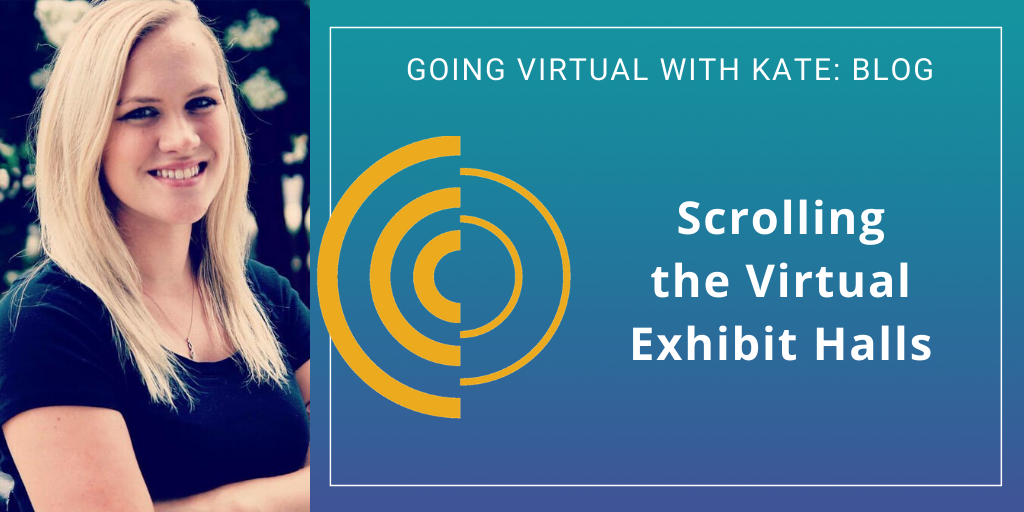
by Julie Ratcliffe | May 21, 2020 | Blog, FaceBook Live
As you transition your on-site event to a Virtual Conference, it is important to consider how you will include the sponsors and other revenue opportunities your organization was counting on while providing a resource center for attendees. In a previous post, we touched on how to monetize your Virtual Conference, including integrating a Virtual Exhibit Hall into your Virtual Conference. Exhibit Halls can be converted to an online format easily and can be just as informative for attendees.
Designing Your Exhibit Hall
A Virtual Exhibit Hall is a home base for all your sponsors. The exhibit hall and each booth can be personalized, depending on the needs of your organization and sponsors/exhibitors. Before designing your Exhibit Hall, identify what features and customization you will be offering to sponsors/exhibitors in their booths.
PDFs, links, or any other resources that would typically be provided to attendees can be housed here. Video and photo assets like commercials or instructional videos or even photo albums can have a dedicated section apart from the downloadable assets and links, all within the individual booths. Going virtual doesn’t mean you lose all the exhibit’s visual and branding opportunities; sponsor logos can be presented in a carousel or posted in various positions around the conference site. Informational and educational posters can be displayed in each sponsor booth, or you can show them all in a collection on a separate posters page
Additional booth features include options for exhibitors and attendees to interact. In each exhibitor booth, there can be a dedicated section for exhibitor staff to “man” the booths and network with attendees via a chat feature. A successful virtual booth should be customized to match the sponsor/exhibitor branding. Have them submit logos or supporting images for greater brand presence.
When it comes to transitioning an Exhibit Hall from in-person to virtual, it just requires some creativity. Use this guide to see how easy it is to transform your on-site Exhibit Hall to a Virtual Exhibit Hall.
Make it Interactive
Once you’ve designed the perfect virtual hall to display your sponsors/exhibitors, the next step is to make sure your attendees interact with the page and the exhibitors. Sponsors are an important part of the vitality of your conference and learners should engage with them. Unlike at an on-site event, where exhibitors are confined to Exhibit Hall hours, your Virtual Exhibit Hall will be open 24/7. Use these tips to encourage activity on your Virtual Exhibit Hall:
- Chat Feature: Whether it’s instant messaging or a discussion board, provide ways for attendees to interact with sponsors.
- Scavenger Hunt: Organize a scavenger hunt around the entire Virtual Conference website leading attendees to the Virtual Exhibit Hall. You can make higher-level sponsors a required stop on the scavenger hunt!
- Credits or Certifications: Offer your attendees a certificate or credit opportunities if they network or interact with sponsors or exhibitors.
- Giveaways/Specials: Encourage your sponsors to offer specials or product giveaways when attendees visit their booth.
- Surveys: Include a survey on your expo page.
- Forms: Embed a Contact Me form to grow your subscriber list.
Including a Virtual Exhibit Hall can be a creative solution to include sponsors, provide more educational resources, and deliver a community-building opportunity. Create a stronger learning community with an interactive Exhibit Hall.
Click here to learn more
To learn more about Virtual Exhibit Halls, contact marketing@commpartners.com
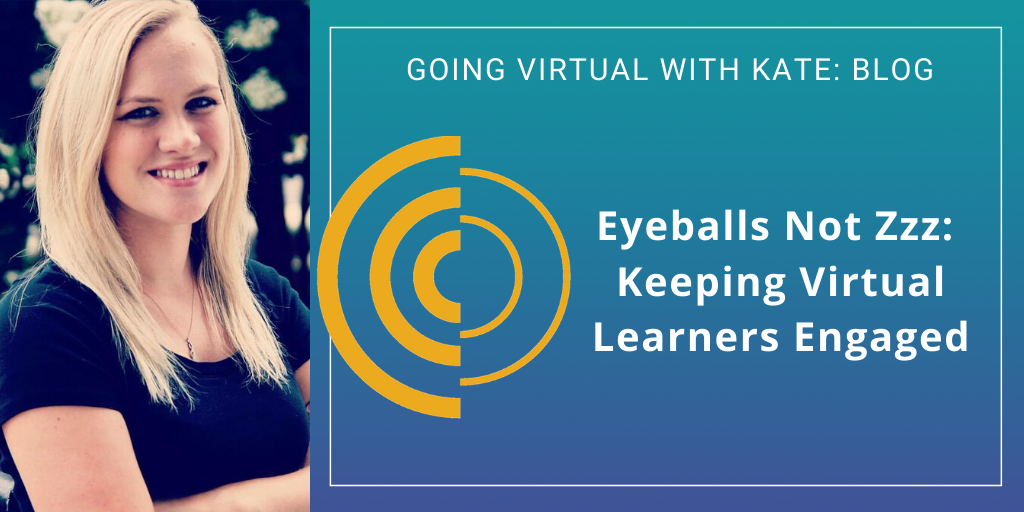
by Julie Ratcliffe | May 14, 2020 | Blog, FaceBook Live
Keeping your learners attention during a Virtual Conference or a Webinar can be a challenge. You had an awesome, 3-day conference planned with all these great activities to make your event interactive, but now you’re forced to go virtual. Attendees who were once going to be bright, shining faces right in front of you, are now faceless figures behind a screen. Are they paying attention to the presenters, or are they scrolling through Instagram? Or are they taking a Buzzfeed quiz to find out which Mamma Mia song fits their personality?
Tracy King, CEO and Chief Learning Strategist of InspirEd, has tips to ensure you’re getting eyes and ears during your virtual eLearning event and not daydreamers.
Session Lengths and Breaks
Even if your learners typically work from home, a Virtual Conference can be a very different learning experience, “consuming content through a screen is fatiguing, and it’s a space we are not used to attending and focusing [on],” says Tracy. Design your sessions with your learners in mind, so your event doesn’t feel like an endurance marathon. When determining session length, consider learning outcomes and the medium, but generally, Virtual Conference sessions should be short about 30-45 minutes. If you plan to go longer, make sure you include interaction (more on that later) and breaks.
Breaks are essential. Presenters and learners need time to stretch, check email, grab a snack/drink, and the ever-necessary bio break. They won’t want to miss a single second of the stellar programming you lined up. To make sure you are giving your learners enough breaks, follow Tracy’s lead:
- 90 minute session = 5 minute break
- Half-day sessions = 15 minute breaks every 90 minutes
Let your learners know when to expect breaks and when exactly they start and stop. Stick to those times. Do not let stragglers derail your conference agenda. If the break is 10 minutes, begin promptly after those 10 minutes are up.
If you’re still unsure of how to design your session, Tracy suggests following the 10×10 Rule: 10 minutes of content and 10 minutes of interaction. The idea is not to be regimented and constantly alternating but for equal parts presentation to equal parts interaction. Speaking of interaction…
Make it Interactive
Don’t shy away from interactivity just because your conference is virtual. Depending on the platform you chose to use for your conference, there may be a host of tools for you to make session hands-on. CommPartners integrates with Zoom, which features tools like a chatbox, whiteboard, Q&A, and polling. These tools can be used as ice breakers, but they should be used to advance learning as well, says Tracy:
- Use the whiteboard in small groups for collaborative projects.
- Poll learners to gauge opinions.
- Facilitate discussion and reflection in the chatbox.
Within CommPartners’ Elevate LMS, or Learning Management System, there are opportunities to make the website interactive for learners:
- Include discussion boards to facilitate conversation, include industry experts as discussion moderators.
- Embed a welcome video introducing your learners to the conference. Make it interactive by giving them a fun task to complete, like asking them to comment where they are joining from on the discussion board.
- If your conference has an Exhibit Hall, utilize chat features so exhibitors and attendees can converse at a booth.
- Create a site scavenger hunt to encourage your learners to explore the whole website, directing them to important features. The winners can receive a prize!
Put the Net in Networking
One aspect of conferences that attendees look forward to the most is the opportunity to network and socialize with other industry professionals. Just because your conference has switched to a virtual platform doesn’t mean the opportunity has to go away. Take advantage of the popular Virtual Happy Hours. Try focusing each Happy Hour around a specific topic, profession, or a previous session so they don’t become overwhelming with too many participants.
Another way to keep the conversation going is to add specific discussion boards or chat rooms to your website specifically dedicated to networking and socializing. Direct your learners to those areas of your website during downtime in the schedule or after learning has taken place. Learners are welcome to take their conversations offline, away from the conference as well.
Going virtual doesn’t mean you need to throw everything you have planned out the window. It is an opportunity to get creative with the tools and the platform you’ve selected. Your learners registered for your conference, ready to consume your quality content, which has not changed. Following these tips will make your learners comfortable, keeping them engaged for the length of the conference.
Click here for more information
For more information about how to engage your learners, contact marketing@commpartners.com. Learn more about education strategy and learning design as well as find Tracy King at inspired-ed.com.
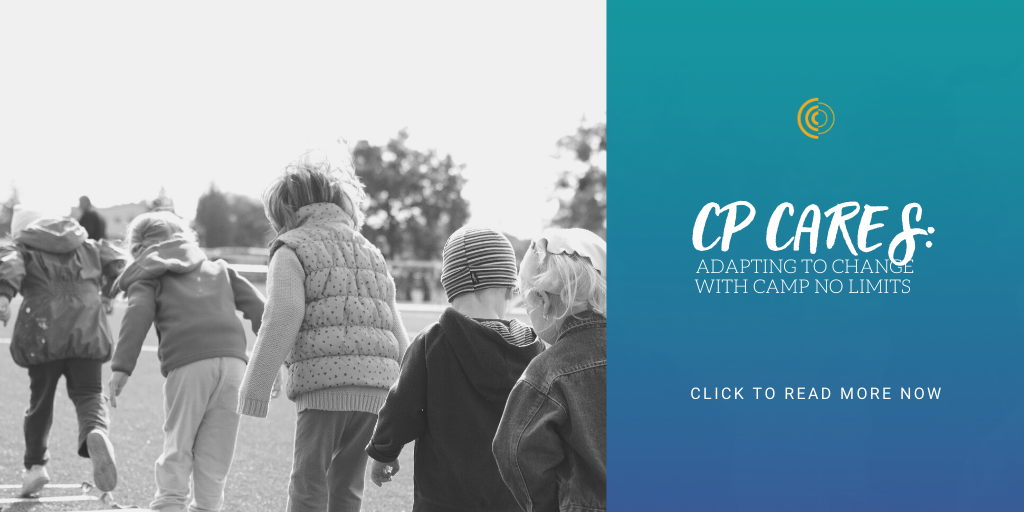
by Julie Ratcliffe | May 8, 2020 | Blog, Customer Stories, Uncategorized
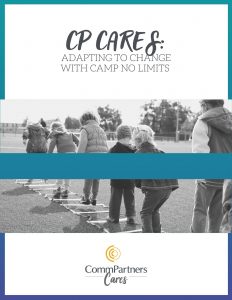 CommPartners is very proud to assist the No Limits Foundation in transitioning their Camp No Limits into a virtual experience. Camp No Limits aims to provide education, mentorship, and support to children with limb loss and differences and their families. This camp provides not only therapy and education opportunities for the campers but is a chance for peer support and is a place to have fun at camp! Stay-at-home orders could not stop Camp No Limits from proceeding, and CommPartners was happy to help the show go on, virtually.
CommPartners is very proud to assist the No Limits Foundation in transitioning their Camp No Limits into a virtual experience. Camp No Limits aims to provide education, mentorship, and support to children with limb loss and differences and their families. This camp provides not only therapy and education opportunities for the campers but is a chance for peer support and is a place to have fun at camp! Stay-at-home orders could not stop Camp No Limits from proceeding, and CommPartners was happy to help the show go on, virtually.
The No Limits campers and staff did what they do best, adapt and grow. They worked hard to incorporate creative elements in each activity to make camp interactive and social. The staff leveraged their energetic personalities and established relationships with the campers to cultivate “camp magic” that was felt through the screens. It included break-out therapy sessions, sibling sessions, plus fun and games like scavenger hunts, karaoke sessions, and a talent show! There was also a Social Hour, where campers could “hang out” in a chat room monitored by Team Leaders during meal breaks.
Read more about our latest CP Cares initiative
here.
Watch the campfire song here: https://vimeo.com/411552623
Watch the talent show here: https://vimeo.com/414080693
View photos from Virtual Camp No Limits: https://vimeo.com/414079715






 CommPartners is very proud to assist the No Limits Foundation in transitioning their Camp No Limits into a virtual experience. Camp No Limits aims to provide education, mentorship, and support to children with limb loss and differences and their families. This camp provides not only therapy and education opportunities for the campers but is a chance for peer support and is a place to have fun at camp! Stay-at-home orders could not stop Camp No Limits from proceeding, and CommPartners was happy to help the show go on, virtually.
CommPartners is very proud to assist the No Limits Foundation in transitioning their Camp No Limits into a virtual experience. Camp No Limits aims to provide education, mentorship, and support to children with limb loss and differences and their families. This camp provides not only therapy and education opportunities for the campers but is a chance for peer support and is a place to have fun at camp! Stay-at-home orders could not stop Camp No Limits from proceeding, and CommPartners was happy to help the show go on, virtually.